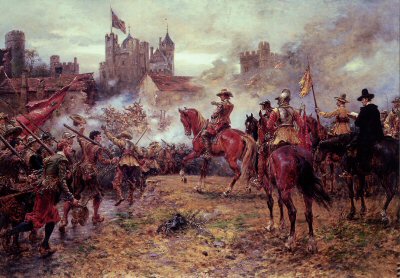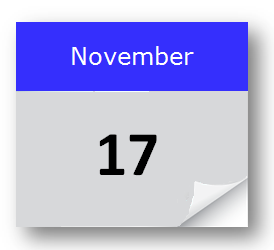On This Day in History: Discover What Happened Today In History
Every day has a story. From groundbreaking scientific discoveries and space missions to landmark political events and natural phenomena, “On This Day in History” offers a window into the past that helps us better understand the world we live in today. Whether you’re a student, teacher, or curious learner, this page delivers daily historical facts that educate and inspire.
Why “On This Day” Matters in Education
Understanding what happened on a specific date in history brings learning to life. Instead of memorising isolated facts, learners see connections between global events, scientific progress, and cultural change. Whether it’s the first moon landing, the fall of a famous empire, or the birth of a notable scientist, knowing what happened “on this day” strengthens our grasp of both the past and present.
Daily Highlights: Educational and Engaging
Each entry on this page is carefully curated to ensure it’s:
-
Historically accurate, with sources and references
-
Educational, aligning with school curricula in history, science, and geography
-
Engaging, with short, memorable descriptions
-
Diverse, covering events from all around the world and across centuries
Whether you’re interested in this day in science, military history, human rights, or space exploration, there’s something here for everyone.
Features of the “On This Day” Page
✅ Updated Daily – So you can explore something new every time you visit
✅ Searchable by Date – Quickly find events that happened on your birthday or any other date
✅ Cross-linked Content – Jump to full articles or educational videos for deeper learning
✅ Student-Friendly Summaries – Clear and concise language for all age groups
Explore the Past, Understand the Present
By learning what happened on this day in history, you’re not just reading about the past—you’re seeing how events shaped the world. These bite-sized historical facts are great for:
-
Daily classroom discussions
-
Social media education posts
-
Personal enrichment and trivia
-
Supporting homeschooling or revision
Example: June 30 – What Happened Today?
Here’s a taste of the kind of historical gems you’ll find:
🛰️ 1908 – Tunguska Event: A massive explosion flattened 2,000 square kilometres of Siberian forest, likely caused by an asteroid or comet.
🚀 1971 – Soyuz 11 Disaster: Three Soviet cosmonauts tragically lost their lives when their capsule depressurized during re-entry.
🌋 1991 – Mount Pinatubo Eruption Aftermath: The eruption earlier in June led to long-term global climate effects and displacement of thousands.
Stay Curious – Come Back Every Day!
Bookmark this page and make it part of your daily learning habit. Whether you’re a lifelong learner or looking for classroom inspiration, Earth Site’s On This Day in History section delivers rich, relevant content that educates and fascinates.
This article shows major events that occurred on this day in history (to select another date use the menu to find events that occurred on that day).

On This Day
-

- 1558
In 1558 Mary I of England Died and her sister Elizabeth became Queen Elizabeth of England and Ireland
Elizabeth was the daughter of King Henry VIII and Anne Boleyn and became Queen after the death of her sister Mary on the 17th of November 1558. Queen Elizabeth was one of the great monarchs in English History and her 45-year reign as Queen was considered the Golden Ages.
Elizabeth was a Protestant which gave her many enemies during her reign with many wanting a Catholic on the throne. In 1568 Queen Mary’s second attempt to defeat the Scottish Nobles she fled to England and was welcomed by her friend and cousin Queen Elizabeth I. After Mary became involved in various plots by Spanish and English Catholics to overthrow Queen Elizabeth, Mary was placed under arrest. In 1586 another foiled plot was directly started by Mary she was tried and convicted of treason. She was executed on the 8th of February 1587.
A year later King Phillip of Spain also wanted a catholic on the throne and had amassed a naval fleet called the ‘Spanish Armada’ which he sent to defeat the English. Elizabeth was a great public speaker and addressed her people about the impending battle, ‘I know I have the body of a weak, feeble woman; but I have the heart and stomach of a king - and of a King of England too’ she proclaimed. A fleet led by Sir Francis Drake defeated the Spanish Armada. Elizabeth never married and never gave birth to an heir. When she died on this day in 1603 the son of Mary Queen of Scotts became King James VI of England, Ireland and Scotland uniting the realm.
Queen Elizabeth died on the 24th of March 1603, without a male heir, the crown passed to James VI of Scotland (the son of Mary Queen of Scots) who became James the First of England and Ireland, uniting the realms and creating the United Kingdom.
- 1869 In 1869 the Suez Canal opened for shipping after 10 years of construction. Work began on the 25th of April 1859 on the modern Suez Canal which links the Mediterranean and Red Sea allowing ships to pass from West Africa and East Asia to Europe. Originally 164 kilometre (102 miles) and 8 meters (26ft) deep the canal has been enlarged since to incorporate new larger ships and is currently 193 kilometres (120 miles) long, 24 m (79 ft) deep and 205 metres (673 ft) wide.
- 1873 In 1873 the city of Buda on the west side of the River Danube and the city of Pest on the east side were amalgamated, creating the city of Budapest, the capital city of Hungary.
